Recreating Thailand’s Tham Luang Cave in the middle of a pandemic in Australia may seem impossible to most, but production designer Molly Hughes proved that she was more than up to the task with her brilliant work on Ron Howard’s awards caliber film, Thirteen Lives.
The film recounts the incredible true story of the global rescue response to a Thai soccer team who were trapped in the Tham Luang cave network during anunexpected rainstorm. A team of the world’s most skilled and experienced divers navigated a flooded maze of narrow cave tunnels to complete a harrowing rescue of the twelve boys and their coach.
Despite multiple projects focusing on the rescue, Amazon Studios went all in with Howard to deliver one of the year’s best pictures. Key to the success of the picture is creating a harrowing underwater world that’s both jarringly realistic, constantly claustrophobic, and somehow camera-friendly.
Molly Hughes had just wrapped her first collaboration with Ron Howard with Hillbilly Elegy (2020) when she was recruited for Howard’s most challenging cinematic effort in decades. “From the word go, it was like, ‘How do we do this for this film?’ You know it’s a complex challenge from the minute you read the script,” says Hughes.
Hughes, who is member of the Academy of Motion Pictures Arts and Sciences and the Art Directors Guild, painstakingly oversaw the creation of the caves across a multi-acre site. The massive space need to allow for several hundred-foot long underwater sets, not including all the chamber sets which also required water.
Hughes spoke to Awards Focus about her experience on Thirteen Lives, her collaborations with her director Ron Howard and David Yates, and her trailblazing work as a woman working in production design.
Awards Focus: Thirteen Lives marks your second collaboration with Ron Howard as a director. Can you talk about how the project came together and describe your process working with Ron?
Molly Hughes: We were doing reshoots on Hillbilly Elegywhen Ron started talking about the film and thinking about the film, and I think it was a time when he was reading the script and he was very excited about doing it. From the word go, it was like, ‘How do we do this for this film?’ You know it’s a complex challenge from the minute you read the script.
Then we all went into lockdown, but we started talking more and more about the film and I got a copy of the script. MGM decided to make the film, I found that time at home before we had to jump into real prep was incrediblyvaluable.
AF: Are you talking a lot with Ron then, over zoom?
Hughes: Yes, Ron really likes to work with the production designer and his first AD and producer, Bill Connor, for an extended period of planning. During that time, we had access to interviews with the divers, Ron was speaking withthe divers, there was a lot of research that we had access to… it just gave us time to sift through all of that. And kind of pick out the things that we felt were most important visually for the film.
AF: So, the film was shot after COVID lockdown?
Hughes: The film was shot during that period because we went to Australia to shoot. We ended up not being able to go to Thailand, so we went to Australia… the Gold Coast, which has the topography there with rainforests and it’s just very beautiful. There are some real similarities to the environment in Thailand.
Before we arrived we had some location scouts on the ground and someone found this farm location for us that had sort of rainforest-type conditions and we decided that it would be where we would build the exterior of the cave and the base camp.
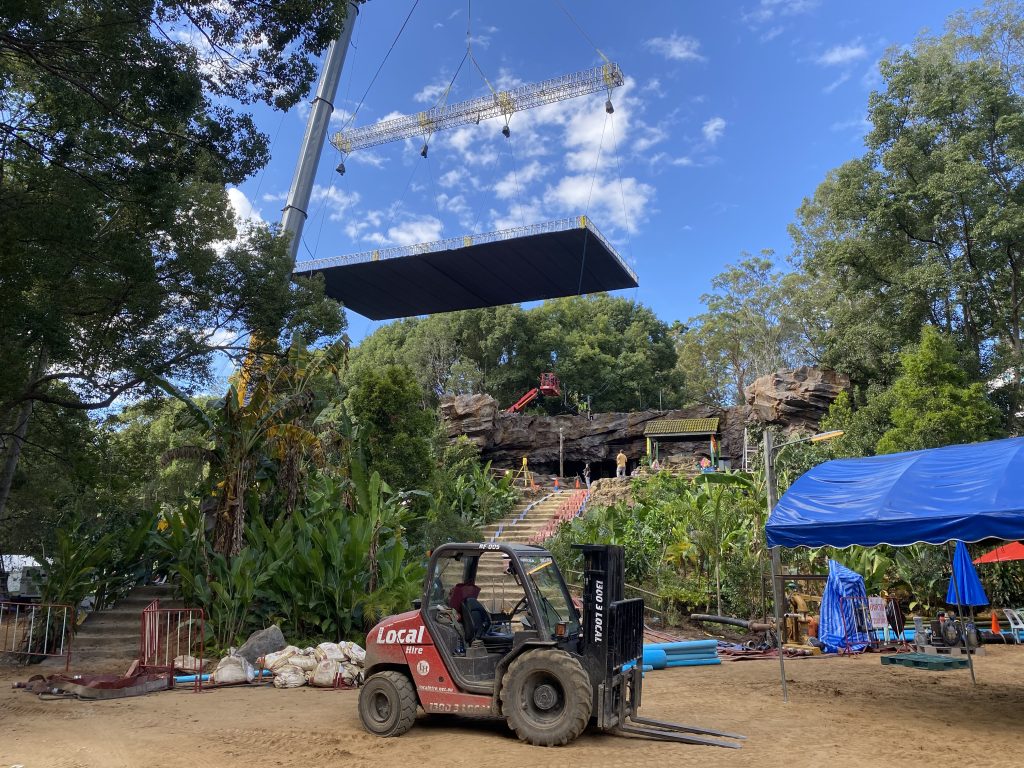
AF: That’s quite an undertaking I imagine.
Hughes: Yes, it had to be a multi-acre site. So this locationwas ticking of the first box. Then we had to figure out what we were going to do about the tanks and the underwater sets because they’re multiple sets and very long,… we’re talking several hundred-foot long underwater sets, not including all the chamber sets which needed water.
People found a large warehouse for us near the exterior location, and that locked into place. Then we started the engineering process of designing the tanks that would then hold the tunnels. So, the kind of infrastructure part of the film was as in-depth as the design of the film itself, if you know what I mean there.
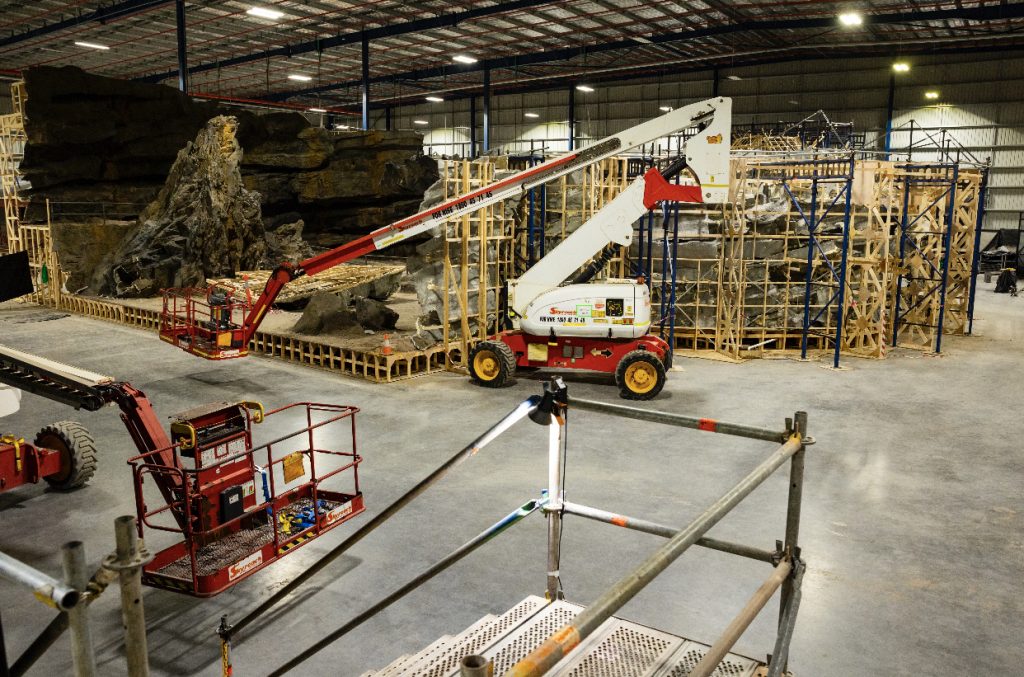
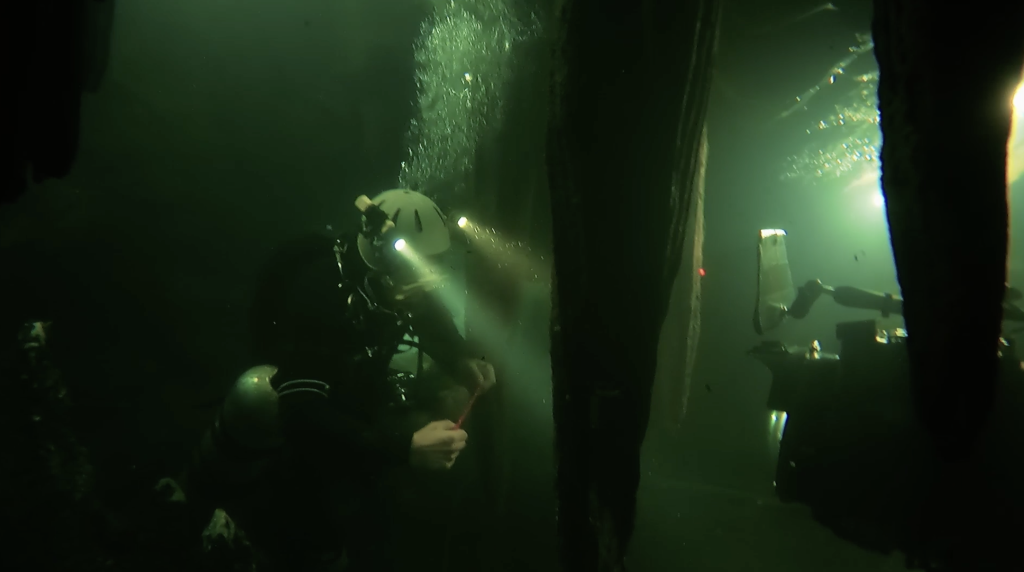
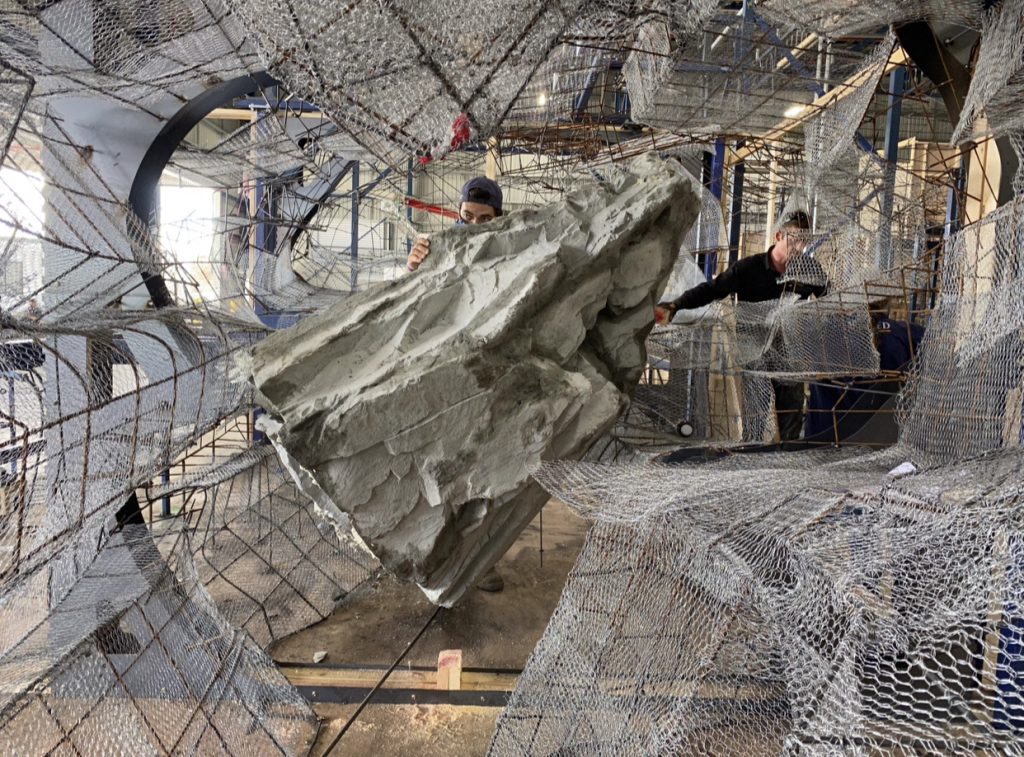
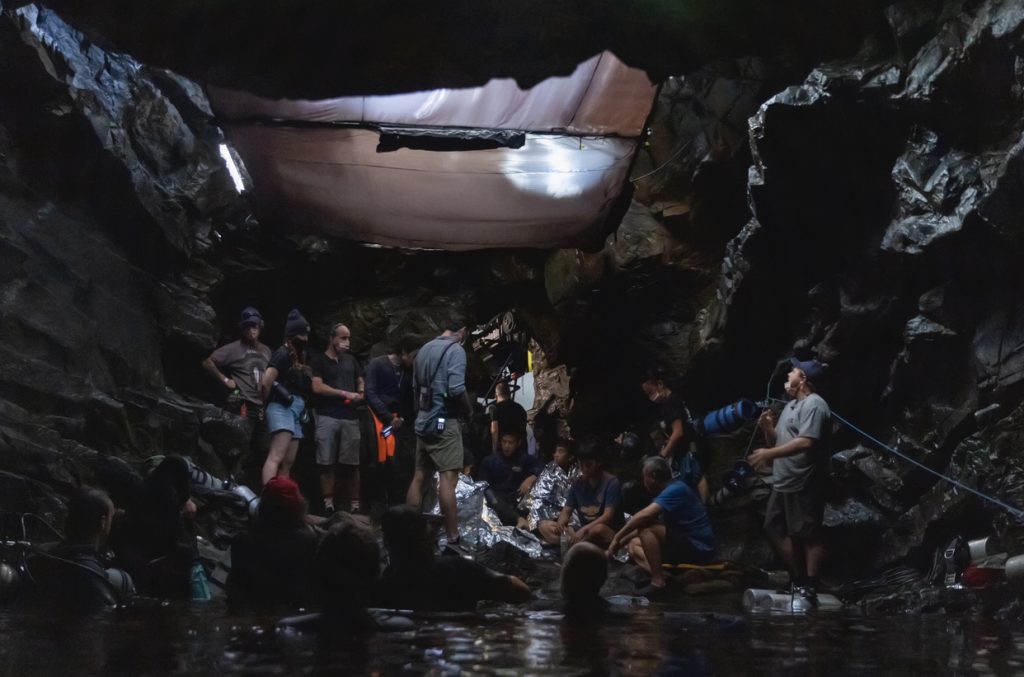
AF: Yeah. You’ve been an art director for many years before becoming a production designer. Can you talk about the work of the art director and how your experience in that position aided you on Thirteen Lives?
Hughes: We work hand-in-hand, but the difference is that the art director is responsible for overseeing constructionand making sure that all departments are communicating with each other. So, in this case, it was really handy for me, having had so much experience as an art director.
It was essential that all our departments were communicating, we had safety divers, stunt divers and coordinators, a construction team, and a sculpting team on top of the actors. Everyone really had to be constantlycommunicating and fully understanding what was actually happening in these 10-foot deep tunnels… some 100-foot long tunnel sets.
For Ron, he would look at these tunnel sets and walk through them, sometimes literally crawl through them together to decide, “Can we make this squeeze? Can an actor get through here? Do we need to make it bigger? Do we need to make it smaller?”
So, all of that communication, having been an art director was really beneficial to that — to that part of the process.
AF: I read that there are not many women working as production designers. How has your experience been in this field and what made you want to become a production designer?
Hughes: The short version is that I went to school for set design. I was always interested in designing films and I wanted to go about it the sort of traditional route of drafting — I was really interested in architecture, drafting, and becoming a set designer.
The old-school sort of traditional route is that you work your way up through drawing. Drawing bigger sets and then being an art director. Now women are coming in who were set decorators or illustrators. The field is opening up. But I sort of have been doing this for 25 years so, in the early years, that was kind of the only way through the ranks.
I loved doing it… I don’t think I realized until I became an art director, there was a disparity between men and women in the field. I did some research and found, unfortunately, the larger the budget, the fewer women there are. Things are improving though as women are designing Marvel films. It’s very exciting.
People like Ron (Howard), who are championing all theheads of department and supporting us, that’s not to be taken lightly either.
AF: This marks back to back projects with Ron Howard and you have a continuing collaboration with director David Yates. I interviewed both of them back in the day, and they bring a very calm, cool and collected energy. Because you hear stories of directors that are yelling, and super aggressive, and they are praised for pushing boundaries and demanding excellence. I have always found that if you work with chill, cool and collected individuals, you can do your job much better. What is your take on a director’s work process and the end result for the film?
Hughes: That’s a great observation. I’m not a fan of yelling on set. I’ve worked with Charlie Kaufman a couple of times too, and all three of those directors are very different. But one thing is, they’re very open to collaboration and they have that focused but calm persona. That creates a strong creative environment because there’s a willingness to listen and communicate really well.
I think the respect part of it is a big deal, and both Ron(Howard) and David (Yates) and Charlie (Kaufman) have a tremendous respect for the craft, and what other people are bringing to the table. People have said to me, referencing Ron and David, “Oh, those are like the nicest two directors in Hollywood.” I feel very fortunate to have had those experiences with them.
AF: When you started working in this business, who were your references for your job? Who did you admire?
Hughes: Oh wow, there are a lot of people. I went to work for Stuart Craig for about 10 years and he is truly one of the most talented designers in history. His work is so beautiful and he knows how to simplify a design down to what is essential. For example, the Harry Potter films look so complicated, it’s all Gothic architecture and everything is so bold.
I’ve learned so much working for him, and I was so lucky to have had that experience. He was also a great listener,very collaborative as we don’t have all the ideas ourselves. As I get older, I have always championed the ideas of the talented people in my department, and they bring so much new stuff to the table.
AF: When you’re offered a film, do you have a preferred genre or a particular subject that you find most engaging? Your projects are all so vastly different, but is there a genre or style that you really love?
Hughes: Well, that’s a great question. I think you learn over time to listen to your gut and take the films that speak to you. But it takes some time to do that, and I think when you’re starting your career, you often do the films that you should do, or you think you should do to advance your career.
I’ve learned that if you take a film for the wrong reason, you won’t enjoy it. And it’s such a stressful process, as you know, it’s kind of a grueling, intense process that if you were stuck on a project that you don’t enjoy, it can be tough.
As far as genres go, I feel like it has so much to do with the director and what the director’s idea is for the project. I loved working on Harry Potter, obviously, that was incredible and getting to do fantasy plus working with David (Yates).
David and I just finished a film that was contemporary in setting, but his ideas were so interesting and design-oriented about the scale and the accumulation of wealth, itmade me very interested in the project.
AF: Do you have any director that you would like to work with that you haven’t, so we can put it out there?
Hughes: Well, I have not worked with any women directors. I’ve found that the dynamic is really fantastic working with a female director. So, I’ll put that out there.
AF: Nice. We will put it into the universe.
Hughes: Thank you for talking to me I really enjoyed it.


